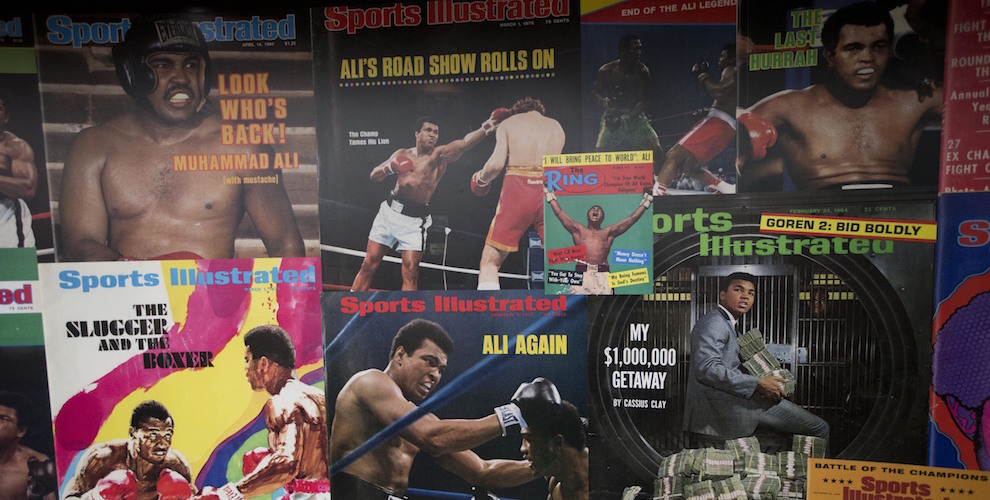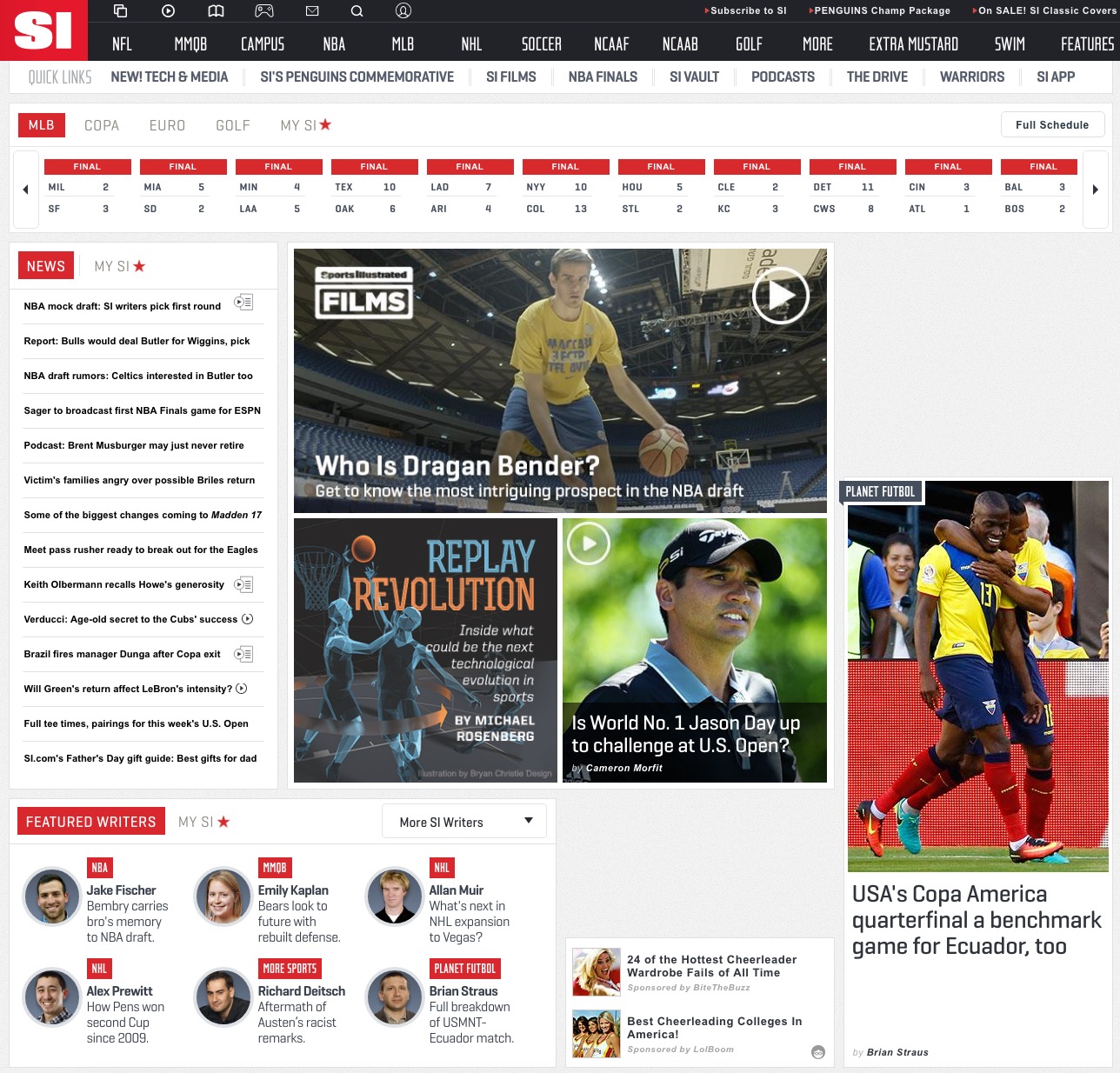
Much has changed since Chris Stone first joined Sports Illustrated in 1992.
 While SI was once focused solely on publishing a weekly magazine, it’s now constantly posting stories and videos to its various websites and social accounts, building an events business, and trying to stand out in a world awash with sports coverage.
While SI was once focused solely on publishing a weekly magazine, it’s now constantly posting stories and videos to its various websites and social accounts, building an events business, and trying to stand out in a world awash with sports coverage.
Those issues are now at the forefront of Stone’s mind, as SI’s parent company, Time Inc., last week named Stone the new editorial director for Sports Illustrated, Golf, and SI Kids.
Stone will take over from Paul Fichtenbaum, who last week said he was stepping down effective June 30.
“We need to find new ways to supplement what we’re doing and reaching audiences that we’re not reaching right now,” Stone said. “I don’t think that’s achieved by just saying, okay we’re going to do this in the magazine, we’re going to do this in the website, from a traditional content standpoint and that’s going to solve everything.”
Stone and I spoke about SI’s digital plans, the role of a weekly print magazine, and the evolving sports journalism landscape. Here’s a lightly edited and condensed transcript of our conversation.
As far as the content piece goes, I think we can offer a premium content experience. I see it everyday with what we do, with what goes up across our site and social channels. The exclusives we get on a routine basis, stories that nobody else is getting. The video we’re producing, both short and longform. The new verticals we’re developing, in addition to the MMQB and Planet Futbol. [Wednesday] we launch the tech vertical; in the fall, we launch an NBA-focused vertical. The quality of our content is apparent everyday, but the first step for us is to fix our product — meaning the site itself. To that end, by the end of July, we’ll have a fully functional, highly functional, attractive new site. The redesign should be completed by the last week of July. That enables us to better tell our content story, obviously.
What you’re going to see Sports Illustrated do a lot of in the coming months and years is to really make big bets in non-core assets, with things like live events, for example, where we’re going to make a big play. Also, nontraditional forms of storytelling, with social media.
I assume you’re in Cambridge, right? Are you a Sox fan?
Then new ownership came in 2002 and said, not only are we going to fix the core, but we’re going to seek to develop our non-core assets. And they made these investments in things like a video production company, a NASCAR team, an English Premier League soccer team, a very successful sports and marketing group. They doubled down on NESN, their television arm, they started throwing concerts in Fenway Park, they had the Winter Classic NHL game in Fenway Park.
What they were doing was they were making nontraditional investments — substantial ones that were designed to enhance the core, to make the overall product a stronger one. I think in 2016, if we look at Sports Illustrated, we can’t go forward without a core — but conversely the core alone is not a sustainable business model. We need to find new ways to supplement what we’re doing and reaching audiences that we’re not reaching right now. I don’t think that’s achieved by just saying, okay, we’re going to do this in the magazine, we’re going to do this in the website, from a traditional content standpoint and that’s going to solve everything. I think we have to take some bets with live events or fan experiences, and stretch ourselves in other areas where sports fans might engage.
But let’s take live events, for instance. Sports Person of the Year is one of our tent poles. It has a lot of prestige. A fair number of people know what it is, and if you know Sports Illustrated, you certainly know what it is. In the past it’s been a really nice event. It’s a one-night thing. It’s a dinner. You have like 400 people there. Let’s put it this way, without getting into the specifics of it: We want to make it much bigger. We want to make it seem like a much bigger public-facing event. Again, I’m stopping short of giving away too much because I’m not at liberty to share these things, but we’re getting closer to something that will be a transformative experience, especially relative to what it once was.
We’re trying to make Swimsuit another core franchise of ours. Right now, it drops in February and it’s a big part of the conversation for a couple of weeks, but we want Swimsuit to feel like more of a year-round event because we do produce swimsuit content year round, and we invest in it year-round, but a lot of people don’t see it as more than an event takes place in February. At the end of this summer, we’re doing a Governors Ball-type event — it’s going to be at a refurbished amphitheater in Coney Island, it’s going to be called Summer of Swim, and the idea is to extend the footprint of one of our biggest franchises in a much bigger fashion.

As we get better telling the stories that people traditionally come to the magazine for, as we get better telling those stories digitally — and we will — what is somebody really losing? We have 3 million paid subscribers who pay money for the magazine at at time when so much is still free. Obviously, this means a great deal. We put a lot of time and resources, no less than we ever had, in creating a premium print product. We’ll continue to do that as long as there demand is. At the same time we’re going to be very aggressive simultaneously at creating that same experience on our digital platforms.
Under the best of circumstances, we weren’t going to be able to maintain that marketshare, that monopoly, on the dissemination of sports journalism and sports stories. But I think in some ways it’s a blessing, because it forces us to work harder to tell the stories we’ve always told and to understand that it’s not enough to write a nice, cleanly written story about the team that’s been hot for the past week in MLB.
I still think we tell stories that nobody else tells, and we tell them better than anyone else tells them, but we’re not the monolith that we once were. That’s not a bad thing. It was inevitable, once the internet and digital opened everything up this was going to happen and it forced us to tell stories in new and interesting ways.